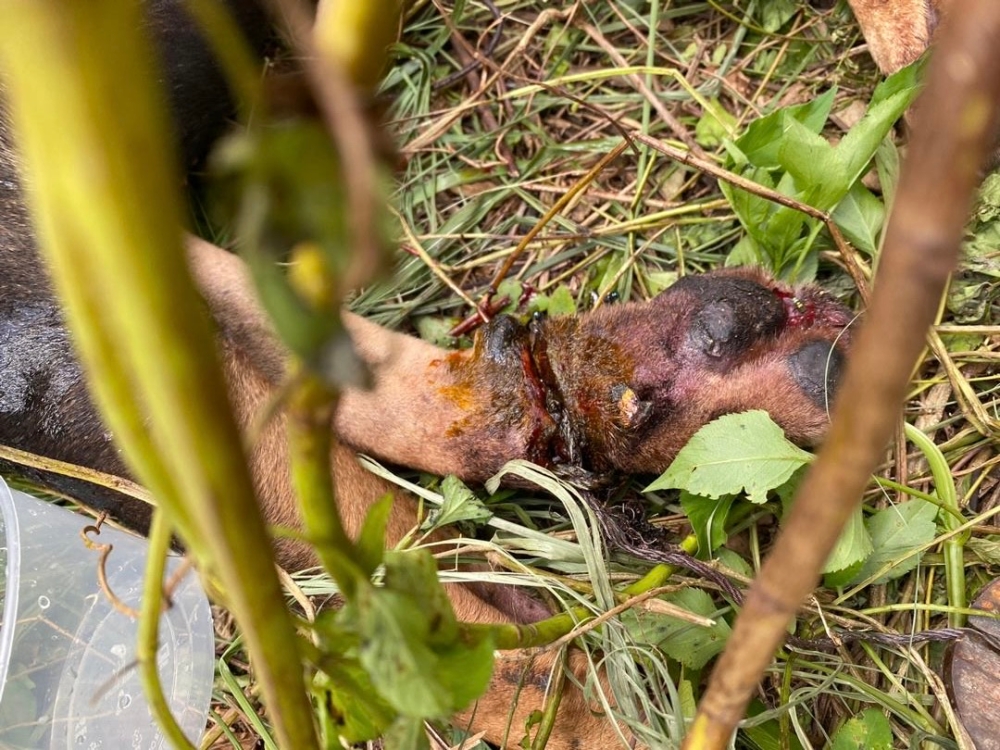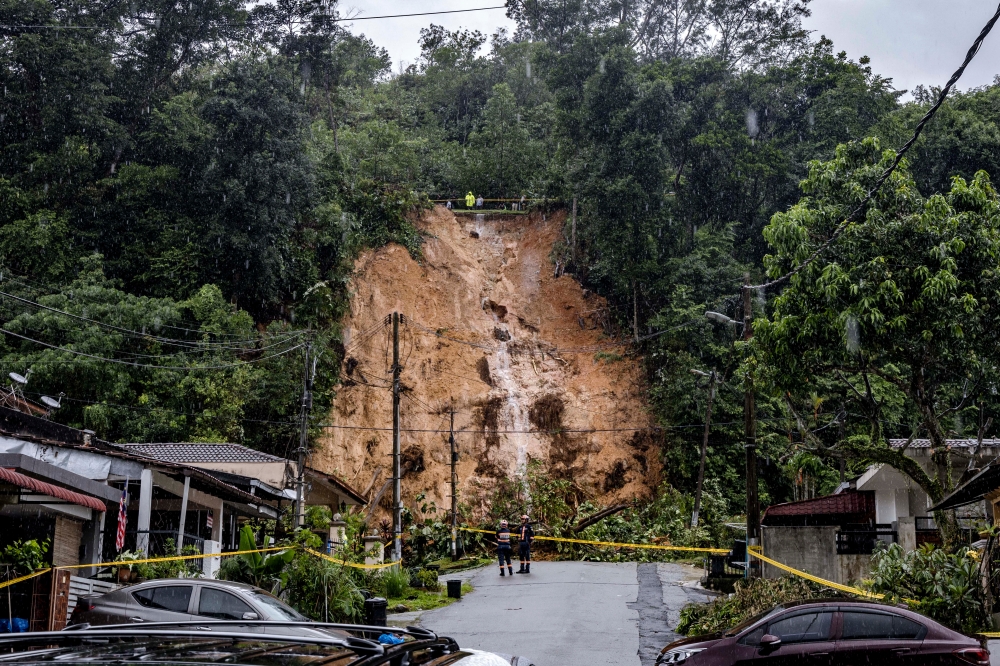KUALA LUMPUR, Nov 12 — Could a terrifying landslide be seen as a blessing in disguise?
For Taman Melawati Residents Association (TMRA) chairman Azhari Abdul Taharim, the recent landslide on Oct 15 serves as a stark reminder for authorities to halt approvals for hillside developments.
Over the years, the TMRA has fought against numerous controversial property projects in the area, successfully stalling one proposal for now: a plan to build two condominium towers between Bukit Mas and Desa View Towers Condominium along Jalan Kolam Air.
“Back in 2019, when the developer showed me the plans, I said there is a river below. How could it have gotten approval?
“The developer then said they would divert the river later. I said no! Because I don’t want another Highland Towers incident in Taman Melawati. Over my dead body,” Azhari told Malay Mail in an interview.
In December 1993, the Highland Towers Condominium tragedy occurred when one of the three blocks in Taman Hillview collapsed following a major landslide triggered by heavy rainfall that overwhelmed the hillside due to burst diversion pipes.
Residents who have lived long enough in the township also remember the 2007 landslide in the Bukit Mas area, which affected three houses on Jalan H4.
Azhari said that the high-rise development proposal has been halted for now, and no planning permission has been approved.
“The area is not safe. Enough is enough. This landslide that hit Jalan E6 shows that it isn’t safe to build on these hill slopes,” he stressed.

This is not the first landslide
Environmentalist and long-time resident Kennedy Michael also expressed grave concerns, citing previous landslide incidents in different parts of the hill and its vicinity.
“This area hasn’t been stable. When they built houses on the hill slope (Jalan G), one of the houses collapsed before anyone could move in.
“It was sometime between 1981 and 1982. Nobody stayed there for many years, and whoever wanted to move in had to reinforce their houses significantly,” Michael said.
He recalled moving in when there were only Jalan A and B, two rows of shoplots, and a single Chinese restaurant in the entire township.
“This whole area was Negara Properties’ nurseries (Taman Melawati town centre).
“Desa View Towers was one of the first few issues we had, but it wasn’t as messy. But Bukit Mas apartments were more worrying as there is a river flowing past it.
“And then they built the Nadayu properties, 20 Trees, and others on the other side near Kemensah,” he added.
Disturbed water table
The previous landslides occurred in 2021, 2022, and just two weeks before the one that hit Jalan E6.
“So you tell me, are these isolated incidents?” Michael questioned.
Through his own investigations, Michael believes these landslides indicate a disturbed water table—a subterranean boundary between the soil surface and the area where groundwater saturates spaces between sediments and cracks in rock.
“People don’t realise that there is a flow of underground water.
“Has anybody done soil studies? But you don’t even need to do that. You saw how the water was coming out from the rock.
“It shows that the entire structure of that place has a water table. Inside the hill, there is a water body. So if you whack from the top, the pressure goes to the bottom—it has to come out somewhere,” he explained.
He added that the murky water flows carry erosion with them.
“You can bring any geologist here, and they will tell you that this is happening due to a disturbed water table.
“Just don’t build anything anymore for now until there are mitigation plans in place,” he urged.

Displaced wildlife from overdevelopment
Is the township overdeveloped? Michael affirmed that it is, citing excessive developments leading to congestion.
“For me, the result of all that construction is mass pollution, displacement of wildlife, and animal abuse.
“We’ve always seen wild boars crossing the road to Kampung Klang Gate Islam Cemetery at night. Now, you see them everywhere, which is worrying. Wild boars are big indicators of dislocation. Where you find wild boars, there could be at least a tiger or a panther,” he said.
In recent years, Michael noted that even monkey troops can be seen “travelling” via electric cables and rooftops of residential houses.
“This is because they have been misplaced. Once they come to the urban setting, they find trash cans. We’ve also started seeing gibbons, which is a bad indicator as they live in deep forests and are being pushed out.
“All my life, I have only heard about gibbons. I’ve never seen them. Now I see them,” he added.
He also claimed that when land is cleared for development, foreign workers employed by developers set traps to poach wildlife before the land is cleared.
“So you find traps set up for wild animals. That’s how my dog was rescued—her leg got caught in a garrote trap,” he said, adding that traps were found in areas around the 20 Trees Apartment.

More frequent flash floods in recent years
Taman Melawati residents had previously objected to the construction of a mall near their homes due to concerns over massive congestion.
“Yes, it’s nice to have a mall, but perhaps they could have reduced congestion elsewhere. The construction of the mall has definitely contributed to flooding as drains were not maintained.
“Because of all the developments on the Kemensah side, Jalan J has begun to experience flooding.
“Flooding used to be sporadic, but now it has become very regular,” Michael stated.
Azhari also mentioned that flash floods are bound to happen with an increase in population and buildings, but the township’s infrastructure remains unchanged.
“More buildings have emerged, but the size of the drains remains the same.
“We even have a convention centre and a commercial centre in the middle of the town centre despite our objections.
“We need a community hall, not a convention centre. Now a restaurant is running the convention centre for weddings, but it only has 100 parking bays,” he said.
There were plans for a community centre and a Klinik Kesihatan in the original blueprint, but these have yet to materialize.
Additionally, there are too many hawkers and food stalls contributing to the town centre’s congestion.
“We have a Medan Selera (food court), but they didn’t maintain it. They should upgrade it, move all roadside hawkers and stalls there, and build a multilevel parking lot next to it where the pasar malam plot is now,” Azhari suggested.
The Taman Melawati Medan Selera has had poor hygiene systems and an unresolved rodent problem for many years.
On October 15, not only did a landslide occur in Taman Melawati, but several areas in the town centre were also hit by flash floods with water levels reaching knee height. The flash flood caused significant damage, flooding several shoplots and washing away or stalling cars with strong flood currents.



















